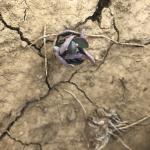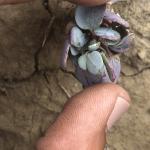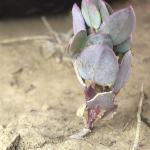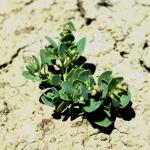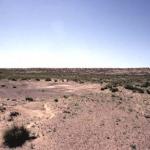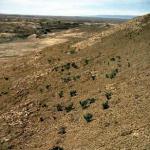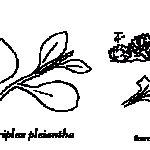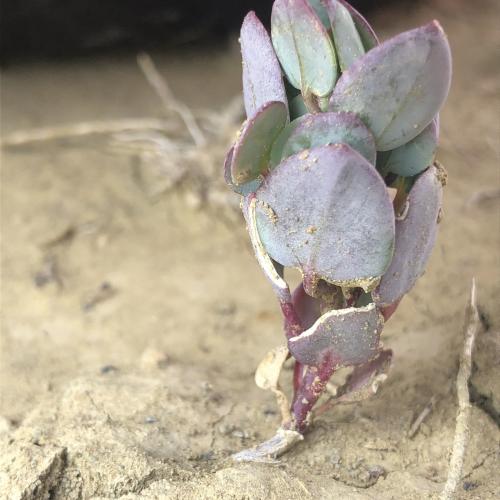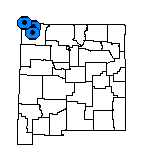Proatriplex pleiantha (Mancos Saltbush)
ATRIPLEX PLEIANTHA W. WEBER
| USFWS | State of NM | USFS | BLM | Navajo Nation | State Rank | Global Rank | R-E-D Code | NMRPTC Status | Strategy Status |
|---|---|---|---|---|---|---|---|---|---|
| SEN | S3 | G3 | 2-2-2 | R | SS |
| Overall Conservation Status | Documented Threats | Actions Needed |
|---|---|---|
| UNDER CONSERVED | Oil & gas development |
Status surveys on abundance, distribution and threats |
Annual herbs, stems 2-15 cm tall, succulent, branches ascending, yellow-white or reddish-purple, glabrous or sparsely farinose; leaves entire, alternate, fleshy, ovate to suborbicular, 5-15 mm long; flowers monoecious; bracts of female flowers triangular-ovate, short-petiolate, entire, 3-7 mm broad and long, obtuse or mucronate at the apex. Flowers mid-May to mid-June.
Proatriplex pleiantha has fruiting bracts that are triangular-ovate and enclose 2-6 flowers. Atriplex graciflora fruiting bracts are samara-like, orbicular, and enclose a single flower. Atriplex argentea fruiting bracts have dentate margins.
New Mexico, San Juan County; adjacent Colorado and Utah.
Desert badlands of Colorado Plateau on saline clay soils of the Mancos and Fruitland shale formations; 1,500-1,650 m (5,000-5,500 ft.).
The occurrence and abundance of Proatriplex pleiantha is strongly influenced by climatic conditions. Seeds may remain viable in the soil for up to 10 years. In unfavorable years the species may be rarely observed, but can be locally abundant in favorable years.
This species was placed in Atriplex in Flora of North America, Vol. 4 (2003), but Zacharius and Baldwin (2010) have returned it to Proatriplex.
Some populations of Proatriplex pleiantha are threatened or have been destroyed by coal strip mines and gas well operations. There are, however, several populations on geologic substrates that lack strippable coal seams.
Cully, A., D.E. House and P.J. Knight. 1986. Status report on Atriplex pleiantha. Prepared for the U.S. Fish and Wildlife Service, Ecological Services Field Office, Albuquerque, New Mexico.
Foote, P.W. 1989. Germination studies in Atriplex pleiantha. M.S. Thesis. Department of Agronomy and Horticulture, Brigham Young University, Provo, Utah.
Knight, P.J. and M. Porter. 1991. A survey and field analysis of monitoring plots for Proatriplex pleiantha near the Navajo Mine in San Juan County, New Mexico. BHP Minerals International, New Mexico.
Knight, P.J. and M. Porter. 1992. A survey and analysis of monitoring plots for Proatriplex pleiantha. BHP Minerals International, New Mexico.
Flora of North America Editorial Committee. 2003. Flora of North America, volume 4. Oxford University Press, New York.
Zacharius, E.H. and B.G. Baldwin. 2010. A molecular phylogeny of North American Atripliceae (Chenopodiaceae), with implications for floral and photosynthetic pathway evolution. Systematic Botany 35(4):839-857.
For distribution maps and more information, visit Natural Heritage New Mexico

